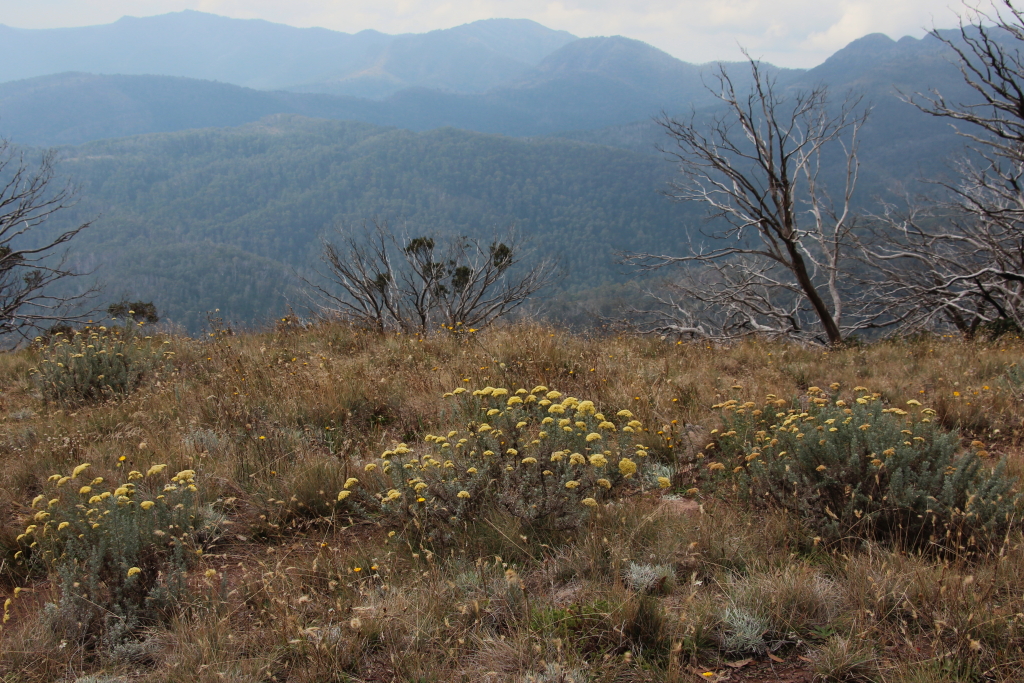Cassinia monticola
Orchard Mountain CassiniaSpreading shrub (30–)50–100(–200) cm high; branchlets usually reddish-purple with a moderate to sparse indumentum of loose white cottony crisped hairs, typically also with sparse to moderately dense emergent glandular hairs, sometimes also occasional subsessile glandular hairs. Leaves spreading to suberect, sessile, narrowly linear or linear to narrowly lanceolate, (10–)15–30(–40) mm long, (1.0-)1.5–3.5(–4.0) mm wide; upper surface ± viscid, usually with dense subsessile glandular hairs and sparse white cottony crisped hairs when young, with sparse to moderately dense cottony hairs when older; lower surface with dense mat of cottony crisped hairs except on ± glabrous midrib; apex acute, slightly reflexed; margins revolute but usually not to midrib. Inflorescences hemispherical, 1–8.5 cm diam. Capitula several hundred, bronze aging to pale straw-coloured to greenish cream, fusiform to cylindric, (4–)5–6 mm long, 1.5–2 mm wide; involucral bracts 16–20, innermost oblong, 4.5–5.3 mm long, erect but spreading at apex when dry, creamy white at tip, clear hyaline at margin, otherwise pale yellow-brown; margin entire; receptacular bracts 2–4; florets (4–)5–6. Cypsela ± square in cross-section, (1.2–)1.4–1.5 mm long, weakly longitudinally ridged or wrinkled, glabrous or with occassional subsessile globular hairs; pappus bristles 2–3 mm long. Flowers Feb.–Mar.
GipP, HSF, HNF, VAlp. Also NSW, ACT. On the Nunniong Plateau, Bogong High Plains and Snowy Range in alpine or subalpine herbfield, grassland, shrubland or Eucalyptus pauciflora woodland at altitudes between 1100–1600 m.
 Spinning
Spinning
